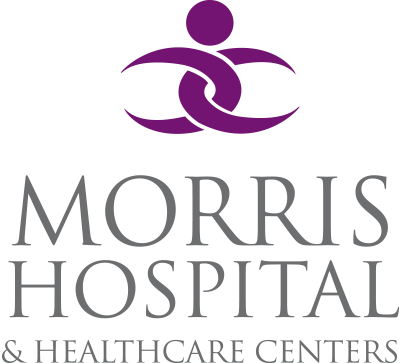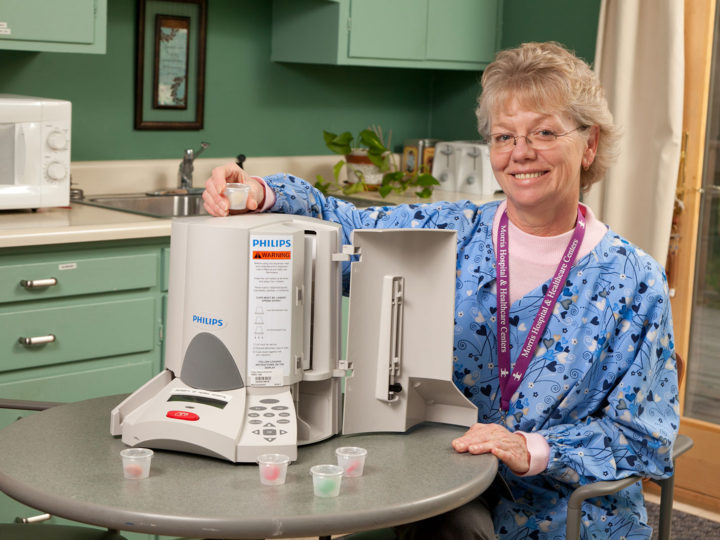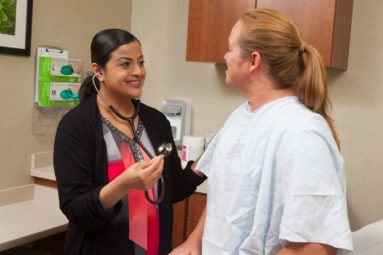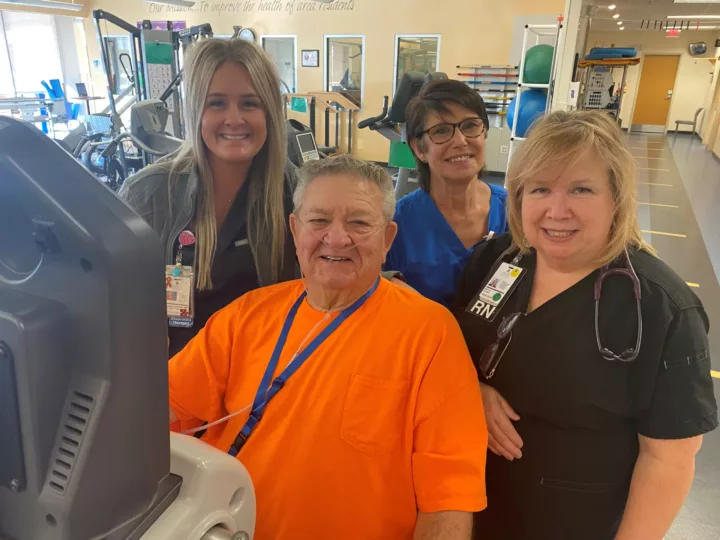Managing Bone Health Matters

Imagine your bones being so fragile that everyday activities such as walking a dog, lifting a laundry basket, or even coughing could cause a fracture or break. While it’s hard to believe, that can happen when someone has osteoporosis, a bone density disease that affects one out of every 10 Americans over the age of 50.
It gets even more alarming. Since osteoporosis has no symptoms, most people do not even know they have the condition until they experience a break or fracture. That’s why osteoporosis is often called the “silent disease.”
Knowing your risk for osteoporosis and managing your bone health is the best way to avoid devastating breaks and fractures as you age.
What is osteoporosis?
Osteoporosis develops when bone mineral density and bone mass decreases, or when the quality or structure of bone changes.
“Healthy bones are considerably more dense and strong compared to bones impacted by osteoporosis,” explains Taelor Stuedemann, a nurse practitioner with Morris Hospital’s Orthopedics & Sports Medicine practice who is leading the new Osteoporosis Management Program. “While heathy bones can bear more weight and better absorb different kinds of impact, bones with osteoporosis are much more fragile and weaker.”
Who is at risk?
While osteoporosis has no symptoms, having certain risk factors can increase the possibility of developing the condition. Risk factors can include:
- Being a woman age 65 or older
- Being a man age 70 or older
- a family history of osteoporosis
- low testosterone levels
- a history of bariatric surgery
- a history of eating disorders
- long-term smoking or alcohol abuse
- previous fragility fractures or multiple fractures
Why is it important to manage osteoporosis?
While there is currently no cure for osteoporosis, consistent treatment can reduce the severity of the condition. Untreated osteoporosis, on the other hand, can be devastating over time.
“Osteoporosis can develop in any bone but happens most often in the bones of the hip, spine, forearm and wrist,” explains Stuedemann. “Severe injuries to these areas can affect a person’s ability to live independently, especially for elderly individuals.”
“When a fracture does occur in a person with osteoporosis, the recovery can take significantly longer since the bone is already weak,” Stuedemann adds. If the break cycle is repeated, overtime it can lead to bone collapse, resulting in life-long pain.
“Patients who do not manage their osteoporosis often have severe mobility issues and may not be able to return to their everyday routine,” she says.
Where to get help
The goal of Morris Hospital’s new Osteoporosis Management Program is to reduce breaks and fractures through earlier diagnosis and improved management of the condition.
Patients start the program by meeting one-on-one with the nurse practitioner to discuss their medical history. If a pattern of breaks or fractures is present in the patient’s history, a DEXA scan may be ordered to learn more about the bone’s density or strength. Bloodwork may also be used to gain more insight into the patient’s medical history.
Treatment for osteoporosis depends on the severity of the diagnosis, with some patients needing multiple methods to manage their condition, including medication, injections, physical therapy, and life style changes such as healthy eating habits and consistent exercise.
“Our Orthopedics & Sports Medicine providers often see patients with osteoporosis-related fractures or breaks that could have been prevented with better management of their condition,” says Stuedemann. “It is important to know about osteoporosis so you can recognize risk factors within yourself or loved ones and then seek treatment.”
Individuals who have risk factors or a family history of osteoporosis are encouraged to talk to their primary care provider or call Morris Hospital Orthopedics & Sports Medicine at 815-942-4875 and ask for an appointment with the Osteoporosis Management Program.




